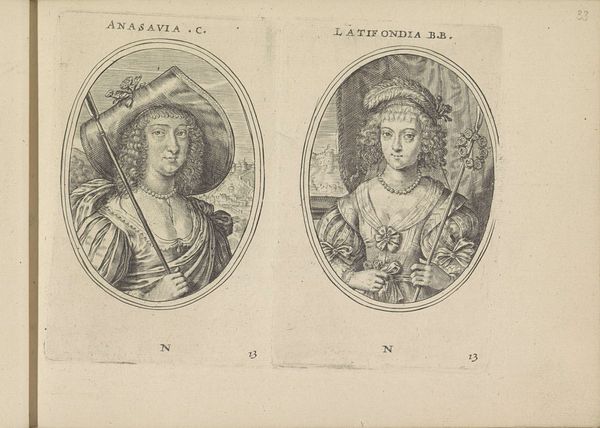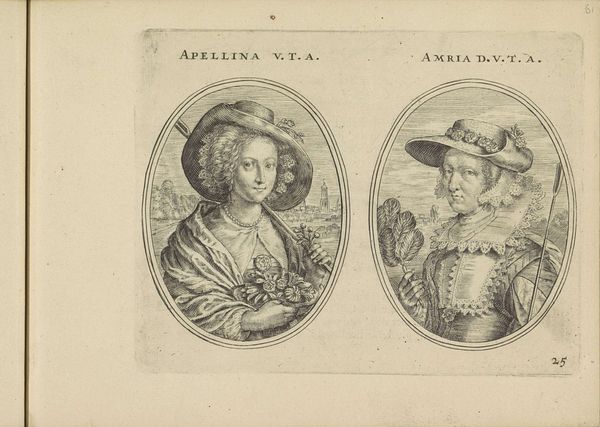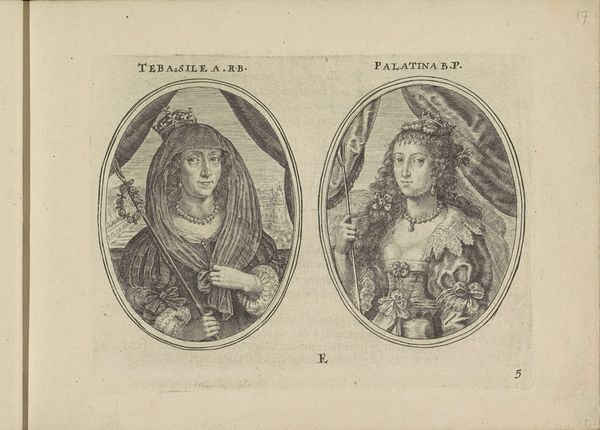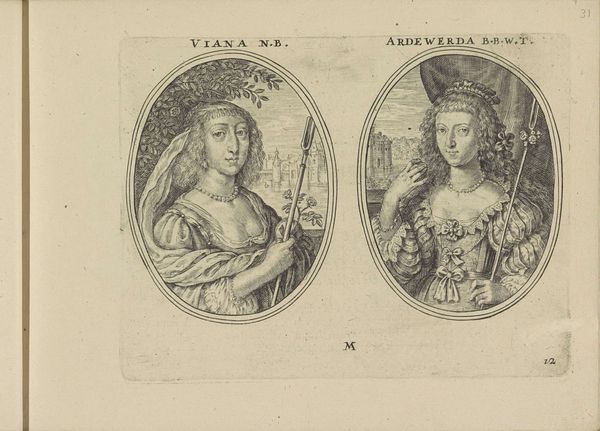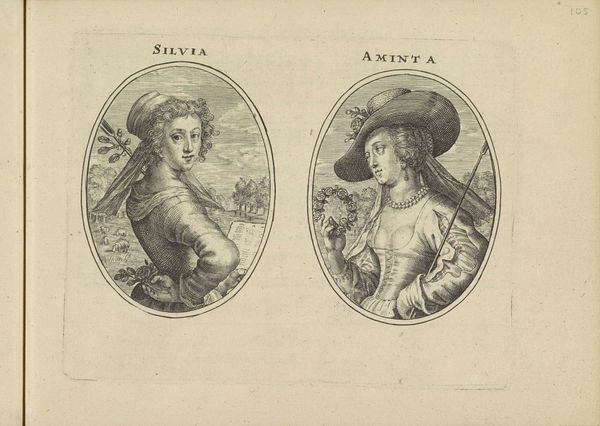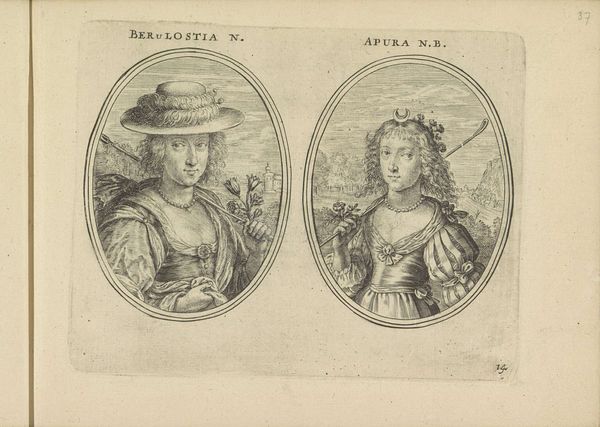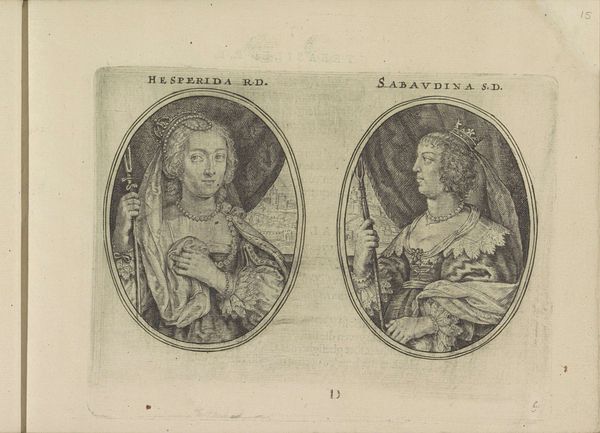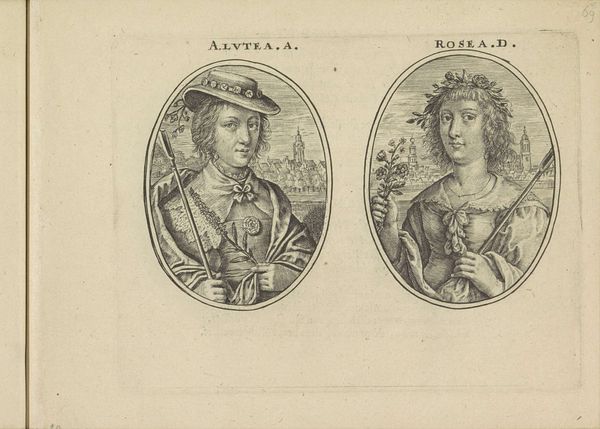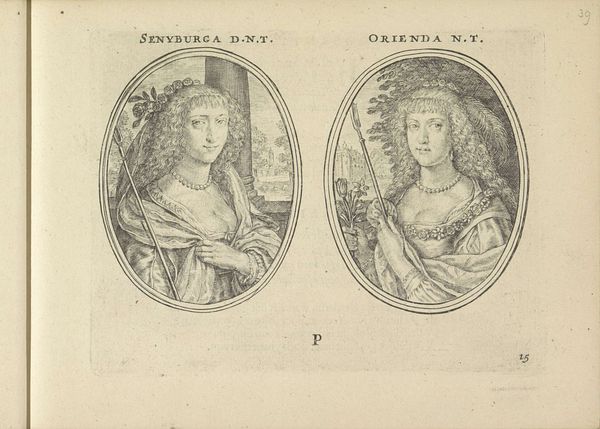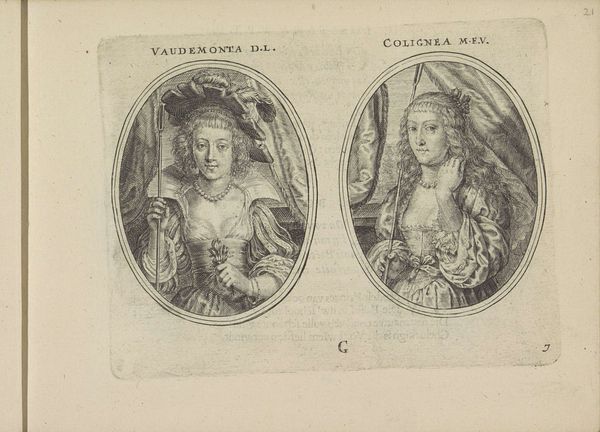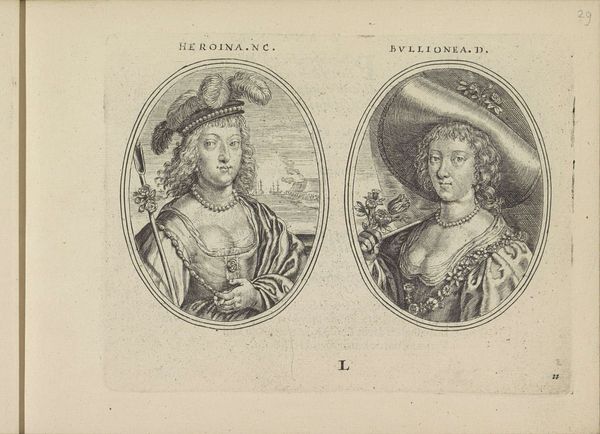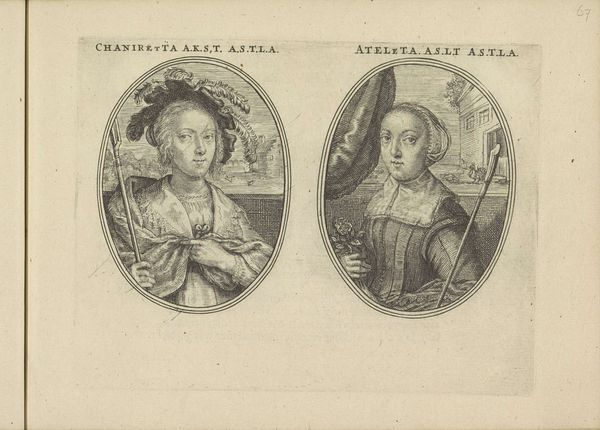
Portretten van twee onbekende vrouwen, beiden als herderin 1640
0:00
0:00
crispijnvandeiipasse
Rijksmuseum
print, engraving
#
portrait
#
baroque
# print
#
pen sketch
#
old engraving style
#
pen-ink sketch
#
pen work
#
genre-painting
#
engraving
Dimensions: height 115 mm, width 148 mm
Copyright: Rijks Museum: Open Domain
These engravings, made by Crispijn van de Passe the Younger, depict two unknown women in the guise of shepherdesses. Made in the Netherlands in the 17th century, it reflects the Dutch Golden Age's fascination with pastoral themes. During this period, it was fashionable for the upper classes to adopt idealized, rural identities. This artifice allowed for the performance of innocence and simplicity, while reinforcing existing social hierarchies, as it was only available to those with money and leisure. The women’s elegant clothing and jewelry, combined with the affectation of the shepherdess role, speak to the artificiality of these pastoral fantasies. By examining portraits like these alongside historical texts and social records, we can gain a better understanding of the complex interplay between art, identity, and social status in the Dutch Golden Age. Art history shows us how cultural values and power dynamics shape what we choose to represent and how we represent it.
Comments
No comments
Be the first to comment and join the conversation on the ultimate creative platform.
